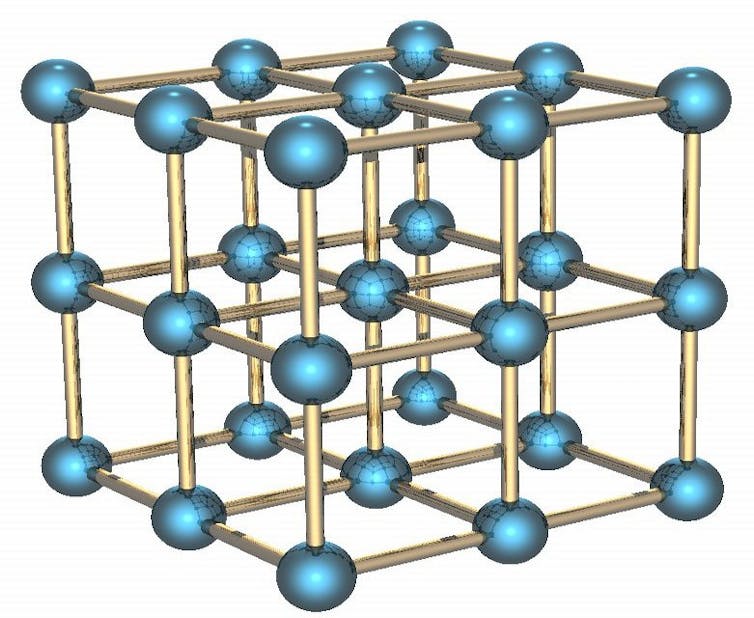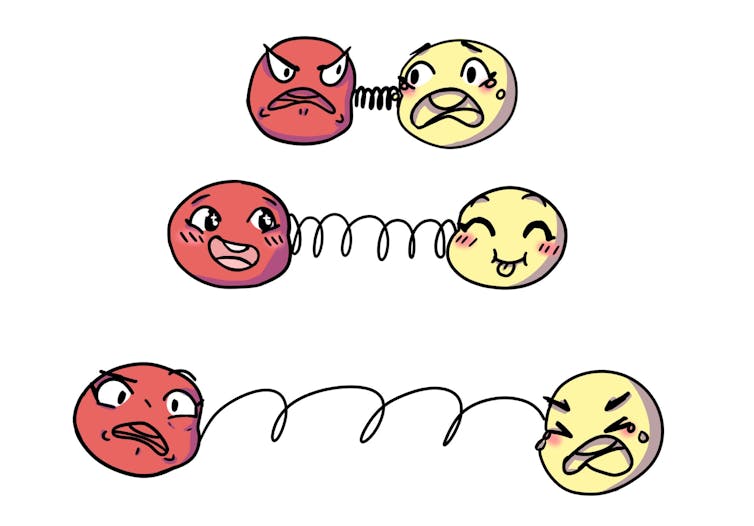Will we ever be able to shrink and grow stuff?
The movies make it seem like someday we'll be able to make people and objects grow really big or shrink really small. Whether this will be possible comes down to the smallest of things.


Curious Kids is a series for children of all ages. If you have a question you’d like an expert to answer, send it to curiouskidsus@theconversation.com.
Will we ever be able to shrink and grow stuff? – Luke, Brookline, Massachusetts
Maybe you’ve seen “Ant Man” or “Avengers: Endgame,” where people can grow to the size of buildings or shrink down to the “Quantum Realm” and travel through time.
This sounds fun, but unfortunately it can’t happen in real life. To see why, let’s look at how things are put together.
Everything we know of in the universe is made of the same things: atoms. They work similarly to Tinkertoys, where blocks are connected by rods to make things.

The simplest forms objects take are crystals. You see crystals in your life all the time, from table salt to metals. These crystals are bunches of atoms connected in repeating shapes, like cubes or hexagons.

If you wanted to grow or shrink something like a crystal, an ant or a person, you’d need to change the distance between the atoms. To shrink something, the distance must get smaller. To grow something, the distance must get larger.
The problem is that the rods connecting the atoms really act like tiny springs: they don’t want to be pushed together, or pulled apart. They want to stay at the same length. This length is so tiny that you could fit a thousand of them inside the width of a single human hair.

How much these tiny springs resist pushing or pulling is determined by the electric force, which is a constant of nature. As far as scientists know, the electric force has the same strength everywhere in the universe, for all time. To grow or shrink something, we would have to change the strength of the electric force, which is not possible to the best of our knowledge.
There are a few things in the world that do shrink or grow, but the way they do so is not by shrinking or growing at the atomic level. Usually it involves adding or removing water or something else. Grapes shrink into raisins when they lose water, and sponges expand when they soak up water.
Many cultures throughout history have removed water from the bodies of people who have died, which is how mummies are made. However, they don’t really shrink all that much. There are also ways to grow or shrink microscopic things like nano-structures by pushing or pulling their atoms together a little bit, but we can’t do the same thing to people, or ants. Sorry, “Ant-thony.”
Hello, curious kids! Do you have a question you’d like an expert to answer? Ask an adult to send your question to CuriousKidsUS@theconversation.com. Please tell us your name, age and the city where you live.
And since curiosity has no age limit – adults, let us know what you’re wondering, too. We won’t be able to answer every question, but we will do our best.
Salvatore Rappoccio receives funding from the National Science Foundation.
Read These Next
Christmas trees are more expensive than ever in Colorado — what gives?
Most Christmas trees are imported from other states, which drives up costs.
How are dark matter and antimatter different?
Normal matter – which makes up everything we see and touch – isn’t the only type of matter present…
Sharks and rays get a major win with new international trade limits for 70+ species
Sharks have had a tough time since the 1970s, when overfishing, habitat loss and a growing trade in…






